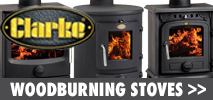Once a previously unused space that ensured a building was watertight, the flat roof has since evolved into a valuable and versatile commodity.
From meeting sustainability targets with solar panel installations, to providing tranquil garden terraces or being used for rainwater harvesting – flat roofs have acquired an increasingly adaptable role within 21st century architectural design.
Fire risk in the fifth façade
The modern role of a flat roof means it is exposed to many fire risks, such as arson, hot works and plant failure. Considering how a roof will perform when exposed to fire is therefore essential when devising an effective fire protection strategy.
When designing a roof, BS EN 13501-5* assesses how a roof will react when exposed to external fire. The roof system is tested by exposure to burning brands, simulated winds and radiant heat, and the highest achievable rating under the methodology applicable to the UK is BROOF(t4).
However, this only assesses a roof’s behaviour when exposed to a limited external fire source. It does not aim to simulate a fully developed fire, nor does it measure performance when the underside is exposed to an internal fire.
Most importantly, a BROOF(t4) result does not assess or infer any comment on the combustibility of the roof system as a whole nor its individual constituent components – a key consideration of roof junction details within Approved Document B (Diagram 8.2).
The most simple and straightforward way of determining the combustibility of a product is by confirming its Euroclass reaction-to-fire rating, which can be found on the product’s Declaration of Performance (DoP).
Mitigating risk
When constructing a flat roof, best practice is to insulate it with materials that have a Euroclass rating of A1 or A2-s1, d0**, which denotes non-combustibility.
This is because non-combustible materials do not contribute to the spread of fire nor emit significant toxic smoke, which ultimately helps to minimise disruption and reduce the wider socio-economic impact in the event of a fire.
Using non-combustible materials is not just a best-practice measure for ensuring effective risk management in today’s market, it also serves to futureproof buildings and specifications against changing client demands and an evolving regulatory landscape.
To help develop industry understanding on flat roofs and managing fire risk, ROCKWOOL has prepared a new whitepaper, ‘Flat roofs: Managing fire risk in the fifth façade’.
To download the whitepaper, please click here.



